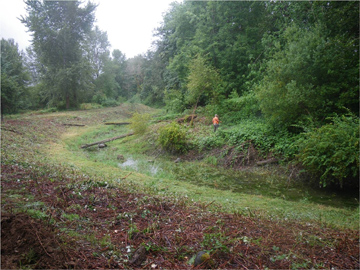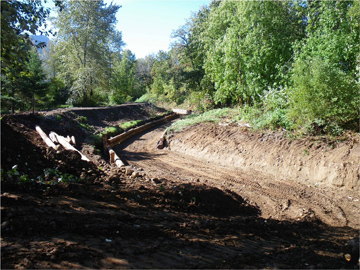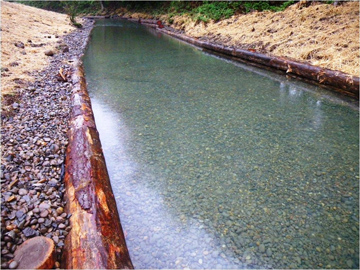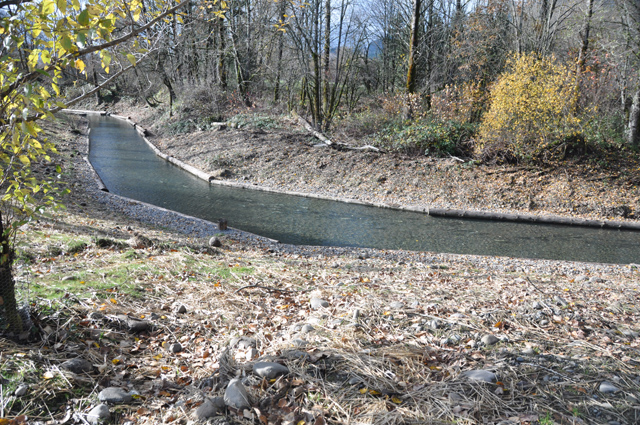A project to improve a spawning channel for chum salmon is attracting hundreds of chum this year.
"There are redds [nests] from head to toe," says BPA biologist Scott Bettin. "It couldn't be any better."
Hamilton Springs feeds a channel off the Columbia River just below Bonneville Dam, where endangered chum salmon typically spawn. Because it's off the mainstem Columbia, it's protected from predators and high runoff events. The underground spring keeps the water warmer - about 50 degrees Fahrenheit - than the 35 degree water in the Columbia.
Unlike young chinook salmon that spend up to a year in streams before migrating to the ocean, chum fry leave for the ocean soon after hatching. Migrating earlier in the year gets them out of the river before predators - including larger salmon - are out in force. So they need to develop quickly, and warm water while the eggs are incubating helps.
Studies have shown that about 60 percent of the fry that hatch in the channel survive to leave for the ocean. This compares to about 10 percent egg-to-fry survival for chum that hatch in the mainstem.
"It's like a hatchery raceway, but in the wild," Bettin says.
 |
| Before |
Washington Department of Fish and Wildlife built the original channels in 1995 to take advantage of the natural spring. But the channel was difficult to maintain, and over the years invasive reed canary grass took over. Gravel where the fish dig their redds was buried in sediment. Eventually, the stream was so overgrown that only 200 feet of the 800-foot channel was usable.
In 2011, the Lower Columbia Fish Enhancement Board and Washington State joined forces to rehabilitate the channel, using funding from the Washington State Salmon Recovery Funding Board and BPA.
|

|
| During construction |
They used an excavator to dig out the channel and extend it to 1,200 feet.
They replaced all the gravel. They lined the new channel with logs to keep bank erosion from covering the gravel beds and filling the stream.
The chum started arriving almost right away. This time, the new channel will be easier to maintain - so it will still be there when their progeny return.
 |
| After |
Adult chum salmon return from the ocean to spawn late in the year, so they can be seen in the channel in November and December. The newly-rehabilitated channel is located in a green space in the town of North Bonneville, Washington - about a two-minute walk from Highway 14.
|

|
| Look closely at the water in the new channel - chum salmon are everywhere! |